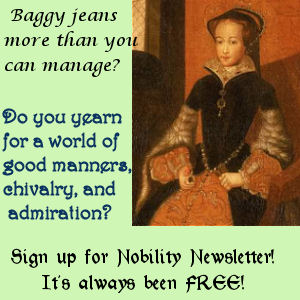David Beaton
(Or Bethune)
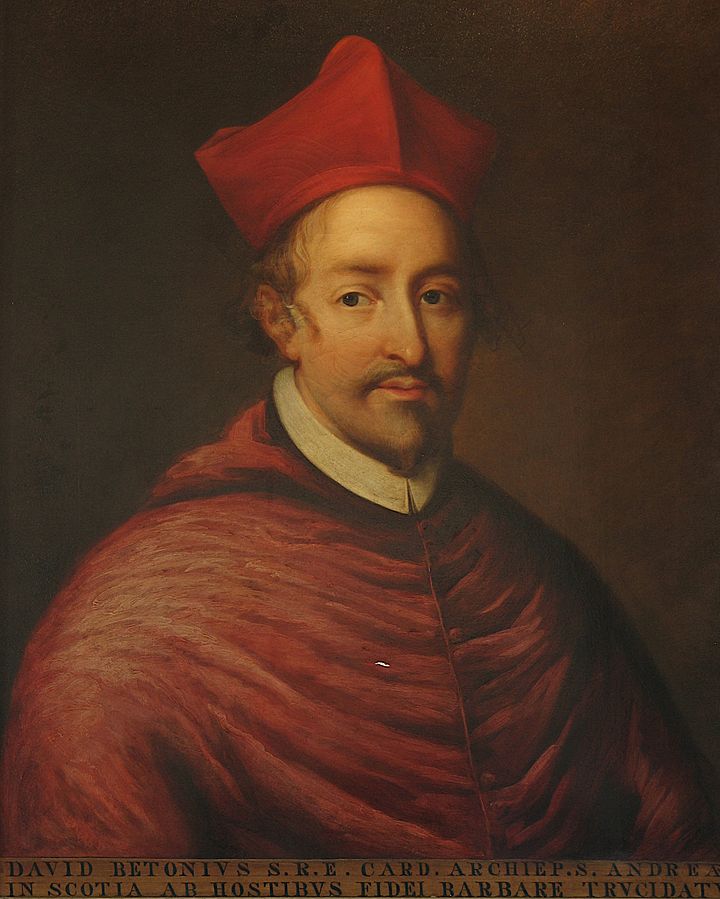 Cardinal, Archbishop of St. Andrews, b. 1494; d. 29 May, 1546. He was of an honourable Scottish family on both sides, being a younger son of John Beaton of Balfour Fife, by Isabel, daughter of David Monypenny of Pitmilly, also in Fife. Educated first at St. Andrews, he went in his seventeenth year to Glasgow, where his uncle, James Beaton, was then archbishop, and where his name appears in the list of students of the university, in 1511. He completed his education in Paris, and in 1519 was appointed by James V Scottish resident at the French court. His first ecclesiastical preferment was to the rectories of Campsie and Cambushing, to which he was presented by his uncle, the Archbishop of Glasgow, and when the latter was translated to the primatial see in 1522, he resigned to his nephew the commendatory Abbacy of Arbroath, obtaining for him from Pope Adrian IV a dispensation from wearing the monastic habit. Beaton returned from France in 1525, took his seat in Parliament as Abbot of Arbroath, and was soon created by the young king Lord Privy Seal, in succession to Bishop Crichton of Dunkeld. James dispatched him to Paris in 1533, with Sir Thomas Erskine, in order to renew the Scottish alliance with Francis I, and to negotiate for the marriage of James with Magdalen, only daughter of the French king. Beaton was present at the marriage of the royal pair at Notre-Dame on 1 January, 1537, and returned with them to Scotland in May; but the young queen died of consumption two months later. We next find Beaton on a mission in England, negotiating about certain difficulties which had arisen on the Border. The Queen-Mother (Margaret) wrote specially commending the Abbot of Arbroath to her brother, Henry VIII, mentioning that he was “gret wyth the Kyng” (of Scots). A few months later he was again in Paris, arranging for the marriage of his widowed king with Mary of Guise. After the ceremony (by proxy) in the French capital, Beaton conducted the bride to Scotland, assisted at the solemnization of the marriage in St. Andrews Cathedral, and was afterwards sponsor (together with the Archbishop of Glasgow) to the first child that was born of the union. His elevation to the episcopate took place during this second embassy to the French court. King Francis nominated him to the Bishopric of Mirepoix (a suffragan see of Toulouse, with an annual revenue of 10,000 livres), and he received the papal confirmation on 5 December, 1537. Two months later he assisted at the coronation of James and Mary at Holyrood, himself crowning the queen. In 1538 the Kings of France and Scotland showed their appreciation of Beaton’s services by petitioning Pope Paul III to advance him to the cardinalate. James in making this request (15 August, 1538) protested his own firm attachment to the Holy See, and urged the necessity of some ecclesiastic being invested with a dignity which would enable him to represent the majesty of the Church in Scotland, and better withstand the “insane errors” of the time. The king repeated his request a month later, and on 20 December, 1538, Beaton was created Cardinal Priest of the Title of St. Stephen on the Cœlian Hill. This had been the title of Cardinal John de Salerno, who had presided at the meeting of Scottish bishops at Perth in the reign of William the Lion; but the only Scottish cardinal before Beaton had been William Wardlaw, Bishop of Glasgow, who died in 1387. Early in 1539 Archbishop James Beaton of St. Andrews died, and his nephew the cardinal (who had six months before been appointed his coadjutor with right of succession) was promoted to the primacy of Scotland. A year later, at his request, William Gibson, Titular Bishop of Libaria, was nominated his coadjutor, with an annual income of £200, paid out of the revenues of the archiepiscopal see.
Cardinal, Archbishop of St. Andrews, b. 1494; d. 29 May, 1546. He was of an honourable Scottish family on both sides, being a younger son of John Beaton of Balfour Fife, by Isabel, daughter of David Monypenny of Pitmilly, also in Fife. Educated first at St. Andrews, he went in his seventeenth year to Glasgow, where his uncle, James Beaton, was then archbishop, and where his name appears in the list of students of the university, in 1511. He completed his education in Paris, and in 1519 was appointed by James V Scottish resident at the French court. His first ecclesiastical preferment was to the rectories of Campsie and Cambushing, to which he was presented by his uncle, the Archbishop of Glasgow, and when the latter was translated to the primatial see in 1522, he resigned to his nephew the commendatory Abbacy of Arbroath, obtaining for him from Pope Adrian IV a dispensation from wearing the monastic habit. Beaton returned from France in 1525, took his seat in Parliament as Abbot of Arbroath, and was soon created by the young king Lord Privy Seal, in succession to Bishop Crichton of Dunkeld. James dispatched him to Paris in 1533, with Sir Thomas Erskine, in order to renew the Scottish alliance with Francis I, and to negotiate for the marriage of James with Magdalen, only daughter of the French king. Beaton was present at the marriage of the royal pair at Notre-Dame on 1 January, 1537, and returned with them to Scotland in May; but the young queen died of consumption two months later. We next find Beaton on a mission in England, negotiating about certain difficulties which had arisen on the Border. The Queen-Mother (Margaret) wrote specially commending the Abbot of Arbroath to her brother, Henry VIII, mentioning that he was “gret wyth the Kyng” (of Scots). A few months later he was again in Paris, arranging for the marriage of his widowed king with Mary of Guise. After the ceremony (by proxy) in the French capital, Beaton conducted the bride to Scotland, assisted at the solemnization of the marriage in St. Andrews Cathedral, and was afterwards sponsor (together with the Archbishop of Glasgow) to the first child that was born of the union. His elevation to the episcopate took place during this second embassy to the French court. King Francis nominated him to the Bishopric of Mirepoix (a suffragan see of Toulouse, with an annual revenue of 10,000 livres), and he received the papal confirmation on 5 December, 1537. Two months later he assisted at the coronation of James and Mary at Holyrood, himself crowning the queen. In 1538 the Kings of France and Scotland showed their appreciation of Beaton’s services by petitioning Pope Paul III to advance him to the cardinalate. James in making this request (15 August, 1538) protested his own firm attachment to the Holy See, and urged the necessity of some ecclesiastic being invested with a dignity which would enable him to represent the majesty of the Church in Scotland, and better withstand the “insane errors” of the time. The king repeated his request a month later, and on 20 December, 1538, Beaton was created Cardinal Priest of the Title of St. Stephen on the Cœlian Hill. This had been the title of Cardinal John de Salerno, who had presided at the meeting of Scottish bishops at Perth in the reign of William the Lion; but the only Scottish cardinal before Beaton had been William Wardlaw, Bishop of Glasgow, who died in 1387. Early in 1539 Archbishop James Beaton of St. Andrews died, and his nephew the cardinal (who had six months before been appointed his coadjutor with right of succession) was promoted to the primacy of Scotland. A year later, at his request, William Gibson, Titular Bishop of Libaria, was nominated his coadjutor, with an annual income of £200, paid out of the revenues of the archiepiscopal see.
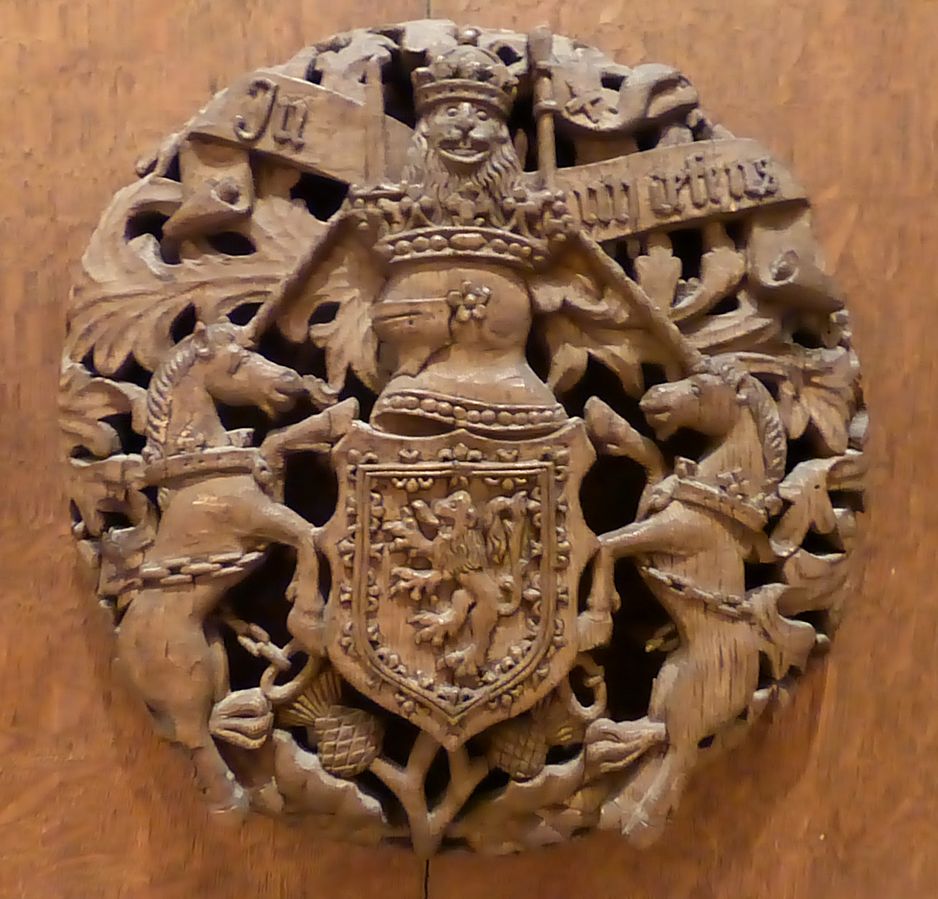
These royal arms are from the Cardinal’s apartments in St. Andrews Castle, Fife. Photo by Kim Traynor.
Beaton, whose commanding ability had now raised him to the highest position attainable in Scotland by a subject, was to have that ability fully tested in the growing unrest of the times, and in the relations, becoming rapidly more and more strained, between James V and his uncle, Henry VIII of England. The latter, in his designs to detach Scotland from its allegiance to the Holy See and bring it into subjection to himself, was supported by the Douglases and other powerful nobles, and by the sympathy of his sister, the Queen- Mother Margaret. James, on the other hand, was backed by the zeal, wealth, influence, and talent of the whole clergy of the realm, and by many loyal Scottish lords; he had the sympathy of France and of the Emperor of Germany, the strong support of the Holy See, and the warm adherence of the great mass of his subjects. Henry in vain tried to shake his nephew’s confidence in Beaton by sending two successive embassies to Scotland, in order to urge James to follow his example in usurping the supremacy of the Church in his dominions. The King of Scots refused to be drawn into Henry’s net, maintained his unshaken trust in Beaton’s statesmanship and patriotism, and declined to leave his kingdom for a personal interview with his uncle. His intrigues being baffled, Henry had recourse to force; and hostilities broke out between the two kingdoms in 1542. The Scotch, successful in the first engagement, were hopelessly defeated by the English forces on Solway Moss, and James died broken-hearted at Falkland soon afterwards, leaving a daughter (Mary) a week old, to inherit the crown. Beaton produced a document in which he, with three nobles, was appointed regent by the late monarch’s will; but the nobles assembled in Edinburgh refused to act on this, declared the Earl of Arran (heir- presumptive to the throne) regent during the queen’s minority, and imprisoned the cardinal on a false charge of conspiring with the Duke of Guise against Arran’s authority. Henry now commenced negotiations with the Scottish regent and Parliament with the object of arranging a marriage between the infant queen and his own heir (afterwards Edward VI), of getting the Scottish fortresses and the government of the country committed into his hands, and the person of Mary entrusted to his custody. Arran and the Parliament agreed to the project of marriage, but were resolute against the rest of Henry’s schemes. Meanwhile the unjust imprisonment of the cardinal-primate had been followed by the proclamation of an interdict throughout the kingdom; and so deep was the feeling aroused among the still Catholic people by the closing of the churches and the suspension of the sacraments that it was thought prudent at once to release Beaton. The undaunted primate instantly summoned the bishops and clergy to St. Andrews; and the assembly, fully alive to that imminent danger (menacing both Church and State) of Henry’s insolent demands, spontaneously voted a large sum, taxed on their own benefices, in defence of the national rights. Beaton by his patriotic ardour awakened similar sentiments in the people at large; the person of the baby queen was safeguarded, and a number of the nobles, including the regent himself (who about this time abjured the new doctrines and submitted to the Catholic Church), abandoned their unnatural alliance with the enemies of Scotland, and ranged themselves on the cardinal’s side.
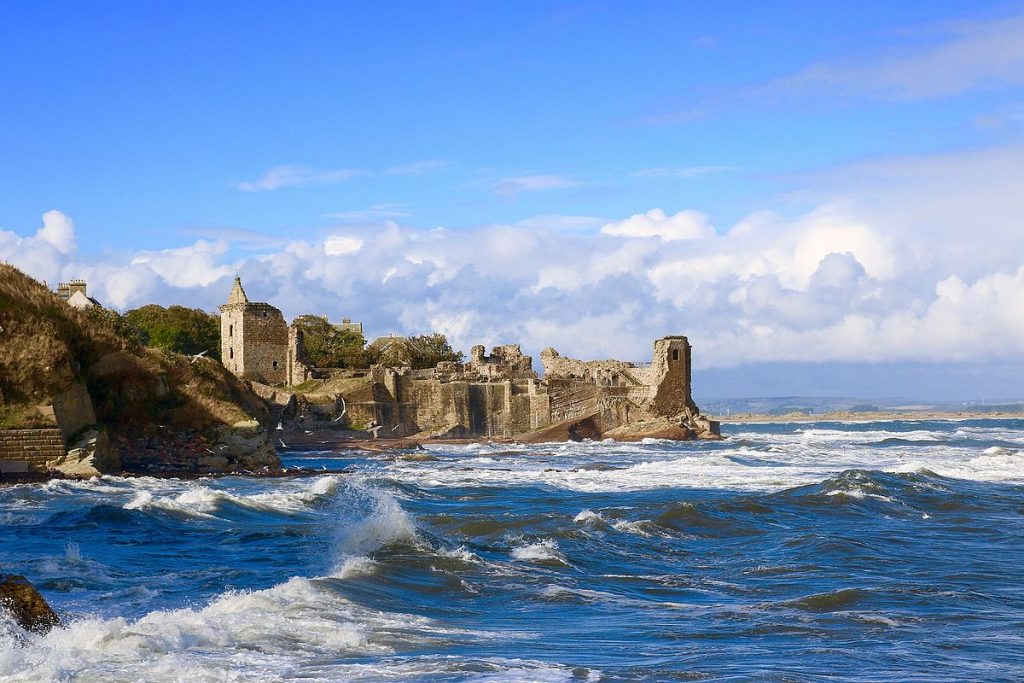
The ruins of St Andrews Castle, where they murdered the Cardinal, mutilated the corpse and hung it from a castle window. Photo by Matthew Leonard.
In October, 1543, Marco Grimani, Patriarch of Aquileia, came from Rome as nuncio to the Scottish court; and it was during his sojourn in Scotland that the high dignity of legate a latere was (in January, 1544) bestowed on Beaton by the pope. About the same time the cardinal was invested with the office of chancellor of the kingdom; the Parliament annulled the treaty of marriage between the queen and Prince Edward, on the ground of the duplicity and bad faith of Henry VIII; vigorous measures were taken against the “English party” among the Scottish nobles; and the bishops were desired to take equally stern measures for the suppression of heretical doctrines. Furious at the frustration of his schemes, Henry now connived at, and indeed openly encouraged, a plot for the removal from his path of the able and patriotic man who had been the chief instrument in foiling his ambitious plans. George Wishart (whose identity, long disputed, with the Wishart afterwards put to death as a heretic has been conclusively proved by the published State Papers of the time) was employed to negotiate between Crichton of Brunston and Beaton’s English enemies, on the subject of the assassination of the cardinal. Nearly three years were devoted to the intrigues and correspondence connected with this dark scheme; and, meanwhile, the primate never relaxed his zeal and diligence in the performance of his high functions. He summoned another convention of the clergy in Edinburgh in January, 1546, when further large sums were voted in support of the defence of the realm against the invading armies of England; and two months later he convoked a provincial council at St. Andrews. The great general council was already sitting at Trent, but no Scottish prelate was able to attend it, the cardinal himself seeking dispensation from Pope Paul III, on the ground of the overwhelming nature of his duties in Scotland. The council at St. Andrews was interrupted by the apprehension and trial, for preaching heretical doctrines, of George Wishart. The trial took place in St. Andrews Cathedral, in presence of the two archbishops and other prelates; the articles of accusation were read and duly proved; and Wishart, remaining obdurate in his errors, was condemned to death, and suffered (being first strangled and afterwards burned) at St. Andrews on 28 March, 1546.
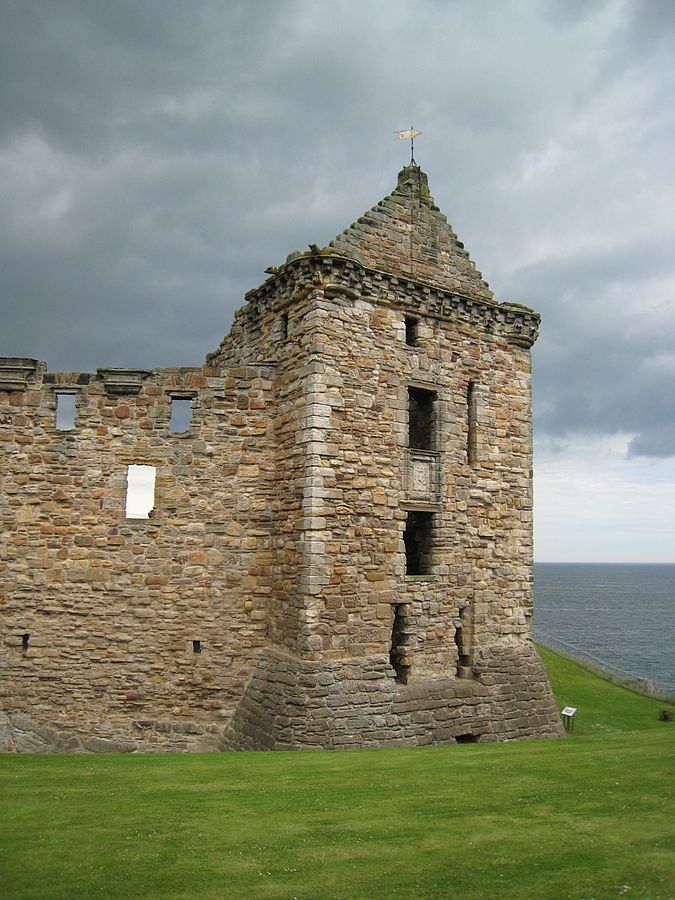 The profound impression caused throughout Scotland by Wishart’s execution induced Beaton’s enemies to hurry on their murderous designs; and two months later a pretext was found for the consummation of the long-cherished plot in a dispute which had arisen on a question of property, between the cardinal and Norman Leslie, Master of Rothes. The latter, with his uncle John Leslie, Kirkaldy of Grange, and James Melville, undertook the work of butchery; and at daybreak on 29 May, 1546, they obtained admission into the castle of St. Andrews, and dispatched the cardinal with repeated blows of their swords. Thus perished, in the forty-fifth year of his age, one to whom (as his most recent, and far from partial, biographer, Professor Herkless, declares) “historic truth must give a place among Scotland’s greatest statesmen and patriots”. No student of his life and of the history of his times can deny the justice of this tribute; and it may fairly be added that he proved himself not less vigilant in the discharge of the spiritual functions of his office, in watching over the interests of the Scottish Church, and protecting her by every means at his command from the inroads of heresy and schism. As to the charge of persecution brought against him, account must be taken of the age in which he lived, and the prevailing sentiments of the time. Seven persons in all are said to have suffered death under him; and Hosack, comparing this number with the hundreds of lives sacrificed under some of his contemporaries, concludes that Beaton deserves rather to be commended for his moderation than denounced for his barbarity. With regard to his moral character, it has been violently attacked by his enemies, and no less warmly defended by his friends. The charges of immorality against him, never raised until after his death, are in many cases absurd and contradictory; and Leslie, Winzet, and the others who strenuously denied them, are fully as worthy of credit as those who maintained them. The evidence from contemporary history is indeed insufficient to decide the truth or falsity of these charges; and Lyon, the historian of St. Andrews, prudently concludes that the accusations and the denials may be considered as neutralizing one another.
The profound impression caused throughout Scotland by Wishart’s execution induced Beaton’s enemies to hurry on their murderous designs; and two months later a pretext was found for the consummation of the long-cherished plot in a dispute which had arisen on a question of property, between the cardinal and Norman Leslie, Master of Rothes. The latter, with his uncle John Leslie, Kirkaldy of Grange, and James Melville, undertook the work of butchery; and at daybreak on 29 May, 1546, they obtained admission into the castle of St. Andrews, and dispatched the cardinal with repeated blows of their swords. Thus perished, in the forty-fifth year of his age, one to whom (as his most recent, and far from partial, biographer, Professor Herkless, declares) “historic truth must give a place among Scotland’s greatest statesmen and patriots”. No student of his life and of the history of his times can deny the justice of this tribute; and it may fairly be added that he proved himself not less vigilant in the discharge of the spiritual functions of his office, in watching over the interests of the Scottish Church, and protecting her by every means at his command from the inroads of heresy and schism. As to the charge of persecution brought against him, account must be taken of the age in which he lived, and the prevailing sentiments of the time. Seven persons in all are said to have suffered death under him; and Hosack, comparing this number with the hundreds of lives sacrificed under some of his contemporaries, concludes that Beaton deserves rather to be commended for his moderation than denounced for his barbarity. With regard to his moral character, it has been violently attacked by his enemies, and no less warmly defended by his friends. The charges of immorality against him, never raised until after his death, are in many cases absurd and contradictory; and Leslie, Winzet, and the others who strenuously denied them, are fully as worthy of credit as those who maintained them. The evidence from contemporary history is indeed insufficient to decide the truth or falsity of these charges; and Lyon, the historian of St. Andrews, prudently concludes that the accusations and the denials may be considered as neutralizing one another.
There are two well-known portraits of Beaton, one (formerly in the Scots College at Rome, now at Blairs College, Aberdeenshire), depicting him in his doctor’s cap, with slightly silvered brown hair, clear-cut features, and a noble and commanding air. In the other portrait, which hangs in Holyrood Palace, he is represented in a black dress, with white bands, and wearing the red skull-cap of a cardinal.
LESLEY, Hist. of Scotland (Bannatyne Club, 1830), 149, 155, 158; State Papers, Henry VIII (Foreign and Domestic), V, VI; THEINER, Monumenta, 609, 611, 613; LYON, Hist. of St. Andrews, Ancient and Modern (Edinburgh, 1838); HERKLESS, Cardinal Beaton, Priest and Politician (Edinburgh, 1891); Diurnal of Occurrents in Scotland to the year 1575; KEITH, Catalogue of the Bishops of Scotland (1755), 23, 24; LYNSAYE, Tragedy of David Cardinall and archbishoppe of Saint Andrewes (London, 1546); Epistolæ Reg. Scot., I, 339-341; HAY, Ad Cardinalem D. Beaton Gratulatorius Panegyricus.
D.O. HUNTER-BLAIR (Catholic Encyclopedia)
